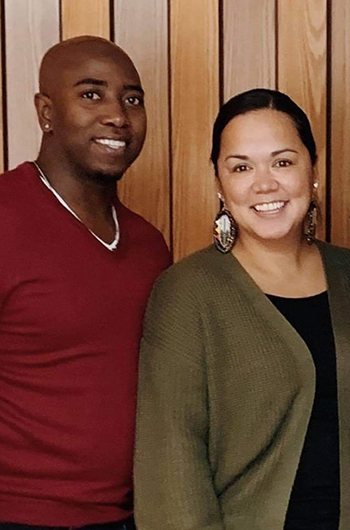 Roger and Anna Ross are planting Epiphany Covenant – Turtle Mountain, a network church located in northern North Dakota. November is Native American Heritage Month, and in a recent interview the couple shared insights on the challenges and opportunities facing American Indian people.
Roger and Anna Ross are planting Epiphany Covenant – Turtle Mountain, a network church located in northern North Dakota. November is Native American Heritage Month, and in a recent interview the couple shared insights on the challenges and opportunities facing American Indian people.
Tell us a little about you, your family, your call.
Roger: I was born and raised in Denver, CO, and moved to Kansas when I was recruited to play football for the University of Kansas. I lived in KS for over 15 years. After getting married I moved to North Dakota and lived on my wife’s reservation.
We have been married for 10 years and we have four beautiful children. After a year of marriage, my wife and I moved to Minneapolis where we lived for eight years. In January 2018, I began to feel an overwhelming call to leave our lives in the Twin Cities and return to the Turtle Mountain Indian Reservation to start a church—and after much discussion, my family moved back to North Dakota that summer.
What can you help us understand about the history of others in your context?
Roger: The people of the Turtle Mountain Indian reservation have a history of hurt from various religions and denominations sent here to “save” the American Indian people. My observation now is that this community is a combination of people practicing Catholic faith and people trying to find spirituality and healing.
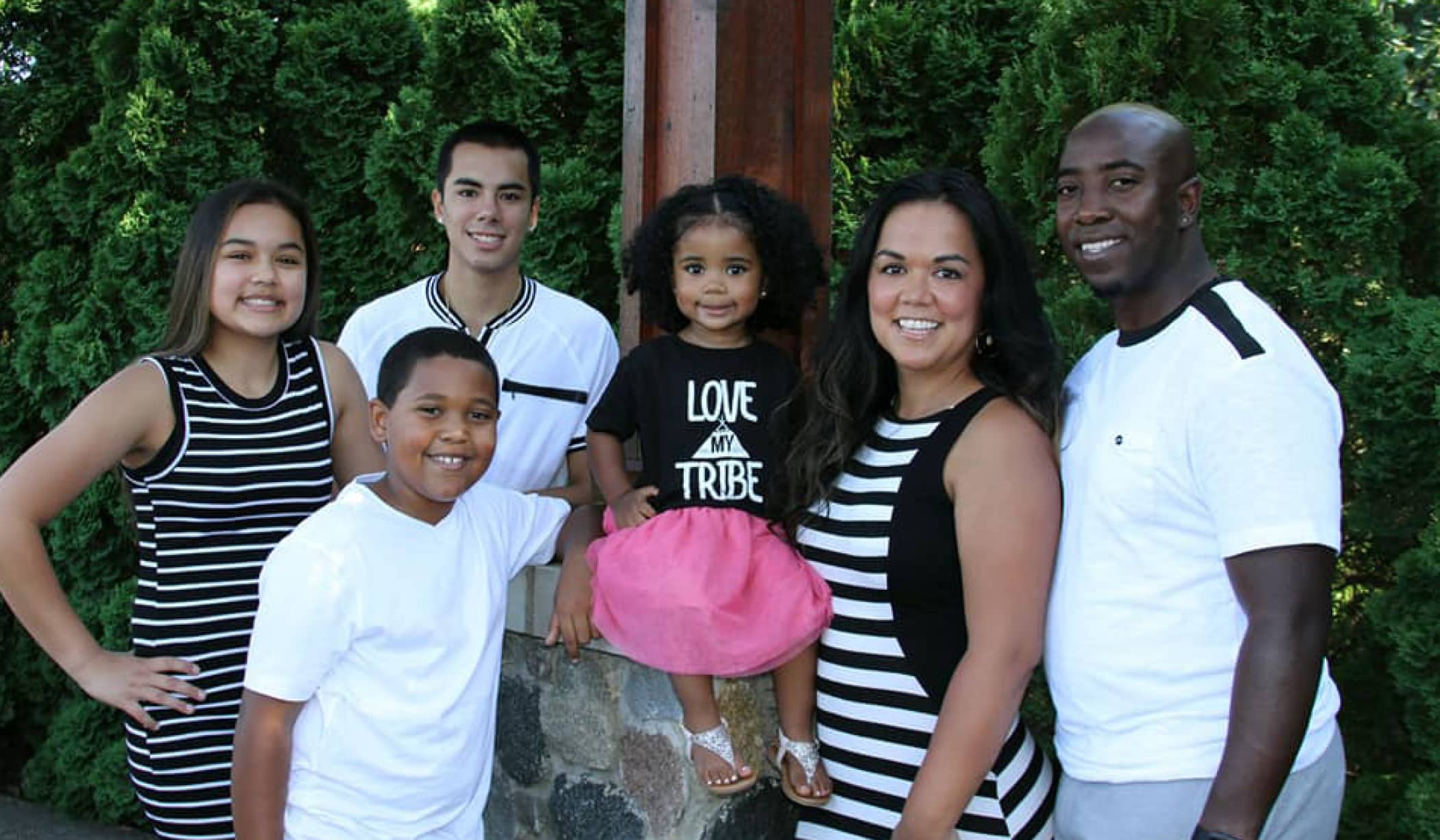
As a church, the ECC is endeavoring to repudiate something called the “Doctrine of Discovery.” What can you tell us about the impact of the DoD on your community?
Anna: The Doctrine of Discovery was created to give justification for taking and colonizing any land not inhabited by “Christians.” How did this impact my tribe? My community? My people? Well … that is a loaded question!
The DoD supported the dehumanization of Native people living on those lands and forced assimilation by any means necessary—including rape and murder. This is not history that just goes away, it continues to impact generations of people within Native communities.
How are families impacted when young men or boys are sent to boarding school, murdered or imprisoned? If they survive and are eventually able to return to their families, the traditional training and ceremonies to transition them into manhood have been lost. They no longer understand their traditional tribal family structure.
The women in the families are often forced to take on new roles while dealing with their own trauma they might’ve faced. These things completely alter the fabric of a community, and new “norms” are created that are often very destructive. This is just ONE example of how the DoD has impacted our people.
The Doctrine of Discovery is a symbol of destruction to the Indigenous people of this country. Destruction that came from people who did horrible things in the name of “Christianity.” If we, as a church, do not take a stand but still expect to make an impact in tribal communities, we are just spinning our wheels.
The ECC needs to make a large statement in order to regain not only the trust of American Indian people, but also to those in other communities of color. Scholars believe that the Doctrine of Discovery fueled white supremacy insofar as white European settlers claiming to be instruments of divine design and possessing cultural superiority.
Is this what we stand for? Sometimes a wound has to be reopened before it can properly heal. We cannot continue to ignore this or act as though this doesn’t exist.
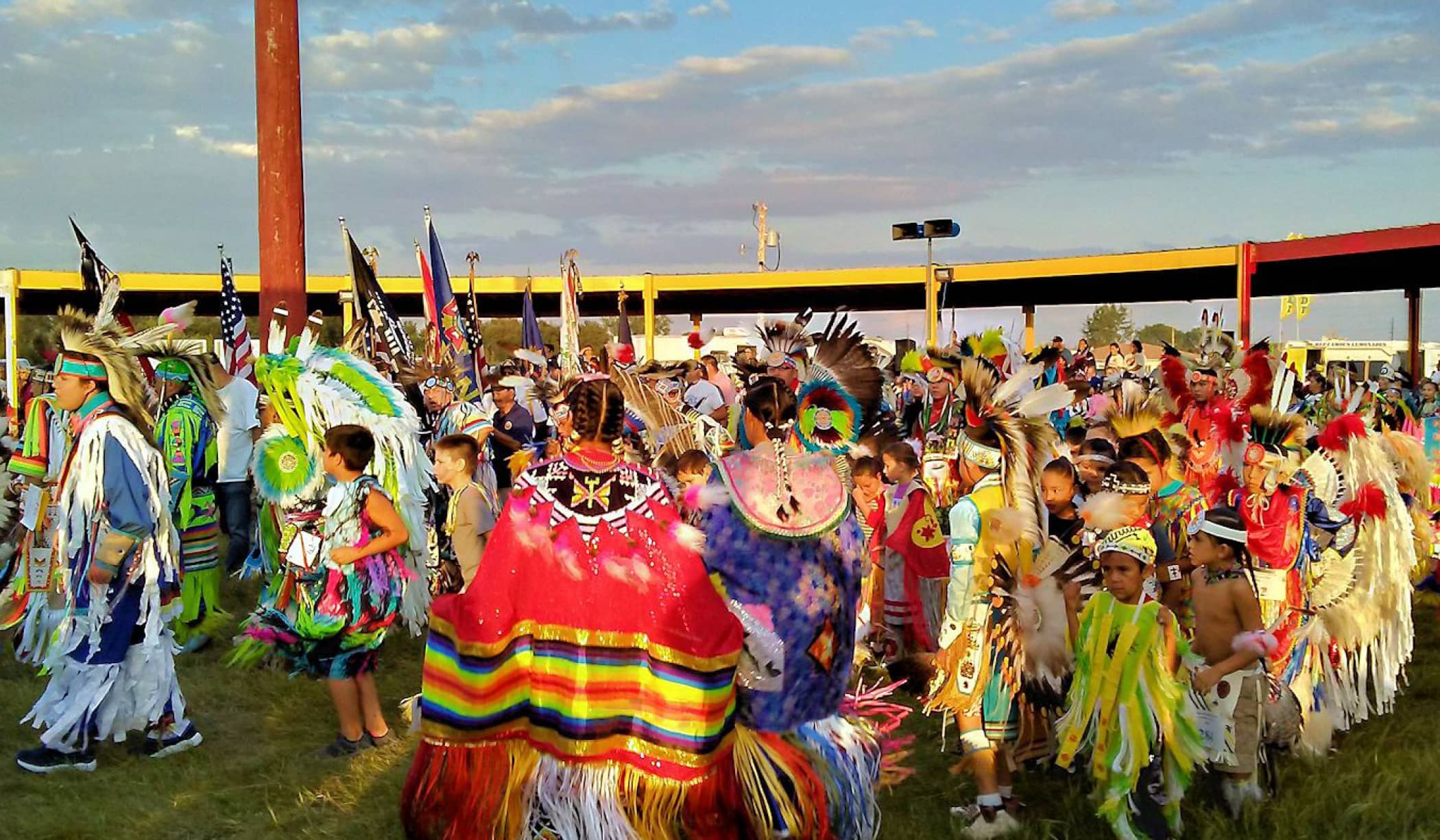
What do you love about the context in which you live? How does that help you to experience God in a unique way?
Roger: I love living in this community because I am not only learning about the history of what American Indian people have endured for centuries, but I am also constantly reminded of the hope and resiliency of these people.
God created these people who have an unbelievably beautiful culture. For decades, the government and various religions have shared a mission to take that culture away.
What do you see as important needs in your community or about those in your context?
Roger: Our community has several needs. This reservation has an unemployment rate which exceeded 60 percent pre-pandemic. The tribe and a few other outside entities have addressed food shortages with food pantries, food drives and soup kitchens.
One immediate need that I see right now is winter gear for those cold North Dakota winters; hats, gloves, scarfs and winter coats.
Are you part of a particular association or ethnic-specific part of the ECC? What can you tell us about that? What do you enjoy about being a part of this community?
Roger: I am a part of the African American and Native American groups within the ECC. As a Black man, it has been great having the support and encouragement from both groups. My wife is also a part of the Native American group and has found connections and family who continue to encourage and support her as well.
What resources would you recommend for those who want to learn more?
- “Unsettling Truths: The Ongoing, Dehumanizing Legacy of the Doctrine of Discovery” by Mark Charles and Soong Chan-Rah
- “Everything You Wanted to Know about Indians but Were Afraid to Ask” by Anton Treuer
- 9 Books for Native American Heritage Month
- Turtle Mountain Band of Chippewa Indians website
- Turtle Mountain Community College
Christian Action Commission (CAC), with the support of the Mosaic Commission and LMDJ, will be presenting a resolution in June at Gather 2021, regarding the repudiation of the Doctrine of Discovery.
Want to learn more about the Doctrine of Discovery? Here are two ways you can do that:
- Take this survey to help us gauge where our denomination is on this topic.
- Join a panel discussion on Tuesday, Nov. 24, at 2:30 p.m. We will be hearing stories about the Doctrine of Discovery’s direct impact from some of our Indigenous brothers and sisters. To join us for this webinar, please register here.
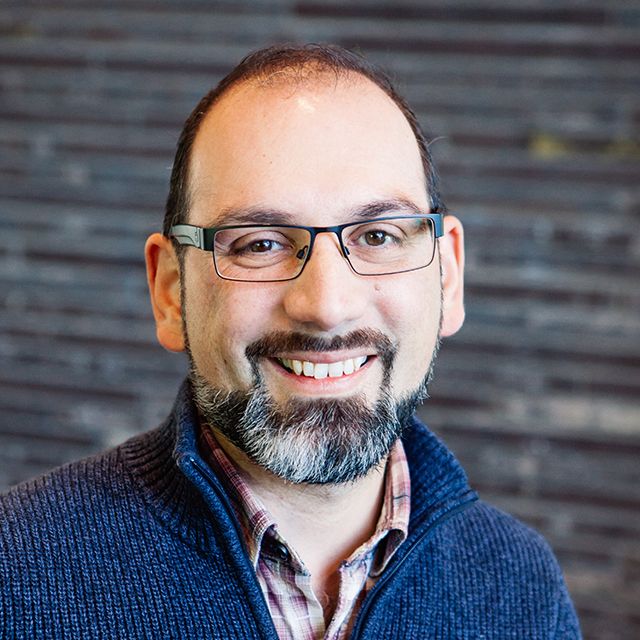 Mauricio Dell’Arciprete is the NWC Coordinator of Latino Ministry and Pastor of Destino Covenant Church in Bloomington. In a recent interview, he shared insights on the challenges and opportunities facing the Latino community.
Mauricio Dell’Arciprete is the NWC Coordinator of Latino Ministry and Pastor of Destino Covenant Church in Bloomington. In a recent interview, he shared insights on the challenges and opportunities facing the Latino community.
As we celebrate National Hispanic Heritage Month, what can you help us understand about the history of our Latino brothers and sisters?
Latin America has a very diverse population with many ethnic groups and different ancestries. As an example, we have more than 1,000 ways to say “Hello”!
Although Spanish is the most predominant language, Latin America is home to hundreds of indigenous languages—before the European conquests, it is estimated that there were as many as 1,750 different languages.
Even before the U.S. existed as a republic, people from “Hispanic” and Indo-America have been incorporated into the culture, history, life and occupational fabric of the United States. (You will find more about the impact of Latino culture in the USA on this page: https://artsandculture.google.com/project/uslatinocultures).
In our region, Latinos come from many different places and backgrounds. For example, at Destino Covenant Church, we have people from around 20 different countries. Some speak Spanish as a second language, English as a third language. Some people came escaping from social, political and economic adversities. Others came to find new jobs or career opportunities. From refugees to business owners, we have a lot of diversity. In any case, seeking the best for their family is a high priority for many Latinos.
What do you love about the context in which you live? How does that help you to experience God in a unique way?
I love the seasons we have in Minnesota, and I love the cultural and ethnic mosaic we have in Minneapolis. When you listen to faith stories coming from people that have very different backgrounds than you, you can appreciate the beauty of the body of Christ and learn a lot from their experiences.
The richness that comes from doing life together with people who are different than you is fantastic!
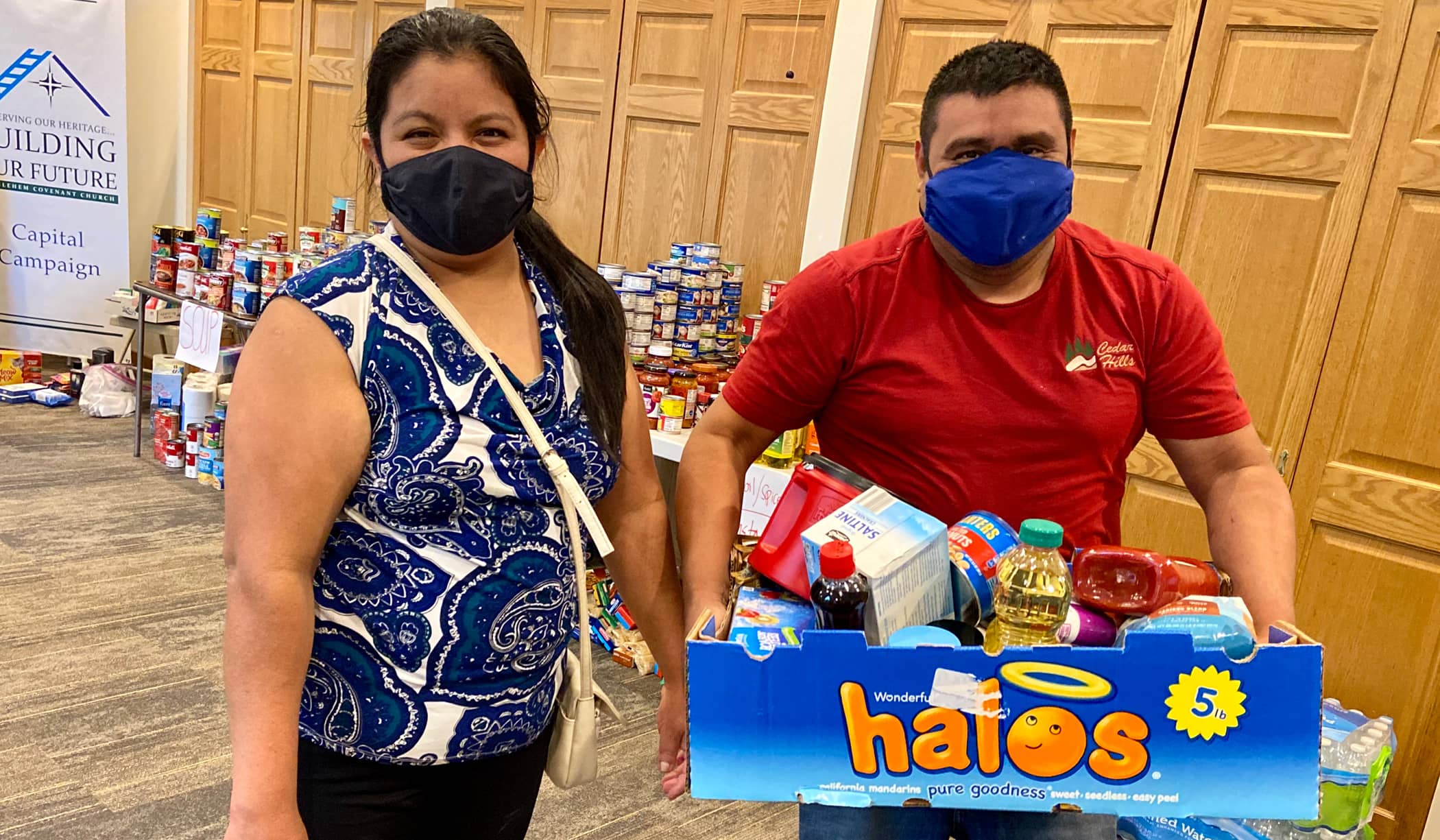
What do you see as important needs in your community, particularly in light of COVID-19 or the current political climate?
COVID-19 has several implications. One noticeable aspect is physical health, where, for various reasons, Latinos are more exposed to getting infected. The statistics are showing us that.
Also, there is an economic impact, where many Latinos work in jobs that have been affected greatly.
There is also an emotional impact. This pandemic forces us to practice “social distancing” and to avoid fraternal expressions like handshake and hugging. This proves to be very hard in the Latino culture in particular.
In the area of immigration there continues to be much uncertainty. Due to COVID-19, immigration cases that were already in process, have been put on hold or postponed. Not much attention is given to the human rights violations at the border, families being separated, children being caged, and refugee status being denied before a trial or hearing.
Are you part of a particular ethnic association within the Evangelical Covenant Church? What do you enjoy about being a part of this community?
I am part of the ECC’s Asociación Latina de la Iglesia del Pacto Evangélico (ALIPE) as a member and serving on the board since 2014. The Association exists as an ethnic commission helping the ECC Latino Pastors to move forward in their ministries, representing the Latino voice in the ECC, and working in partnership with the other ethnic Associations of the ECC.
This is a space where Latino Pastors can find contextualized training, webinars, resources and community. I love the energy, the openness and the authenticity that flows from this community.
What resources would you recommend for those who want to learn more?
- “Mañana: Christian Theology from a Hispanic Perspective” by Justo L. Gonzalez
- “Brown Church: Five Centuries of Latina/o Social Justice, Theology, and Identity” by Robert Chao Romero
- “Prophetic Lament: A Call for Justice in Troubled Times” by Soong-Chan Rah
- “Rediscipling the White Church: From Cheap Diversity to True Solidarity” by David W. Swanson
- “A Future for the Latino Church: Models for Multilingual, Multigenerational Hispanic Congregations” by Daniel A. Rodriguez
For more information about this topic, I recommend contacting Juana Nesta, President of ALIPE, or Fil Nesta, Director of Latino Ministries for the Pacific Southwest Conference.
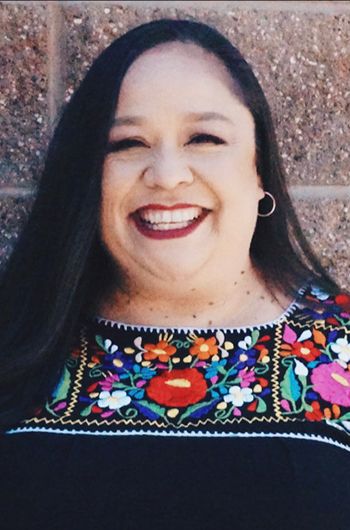 Juana Nesta is President of the Asociación Latina de la Iglesia del Pacto Evangélico (ALIPE) and Pastor of the multicultural Stockton Covenant Church in Stockton, CA. In a recent interview, she shared insights on the challenges and opportunities facing Latino people.
Juana Nesta is President of the Asociación Latina de la Iglesia del Pacto Evangélico (ALIPE) and Pastor of the multicultural Stockton Covenant Church in Stockton, CA. In a recent interview, she shared insights on the challenges and opportunities facing Latino people.
What is your life like in Oakley, CA?
I never would have believed it growing up in Los Angeles, but we are currently on an acre of land 45 minutes outside of San Francisco. It is almost a farm as we have corn growing, chickens and a pony named Coco.
We have three daughters. Our oldest is in L.A., our middle is a college student currently home and our youngest is our miracle baby. She has special needs and was unlikely to survive past six months. Victoriah is now 10 years old. The pony is a therapy animal for her.
I am married to a church planting pastor and I have always been bi-vocational. I am co-pastor of our church while also serving as a teacher. I have taught preschool to junior high and am currently teaching first grade, and have for the last few years.
What did you learn during your time teaching during the stay at home order?
I had to learn to teach 24 first graders online. And I really feel more called to being in the classroom, more than ever. In person teaching really does make a difference.
Our district is 68% Latino. As time at home continued, I became even more aware of the disparities. There are some children I never connected with and am still concerned about them.
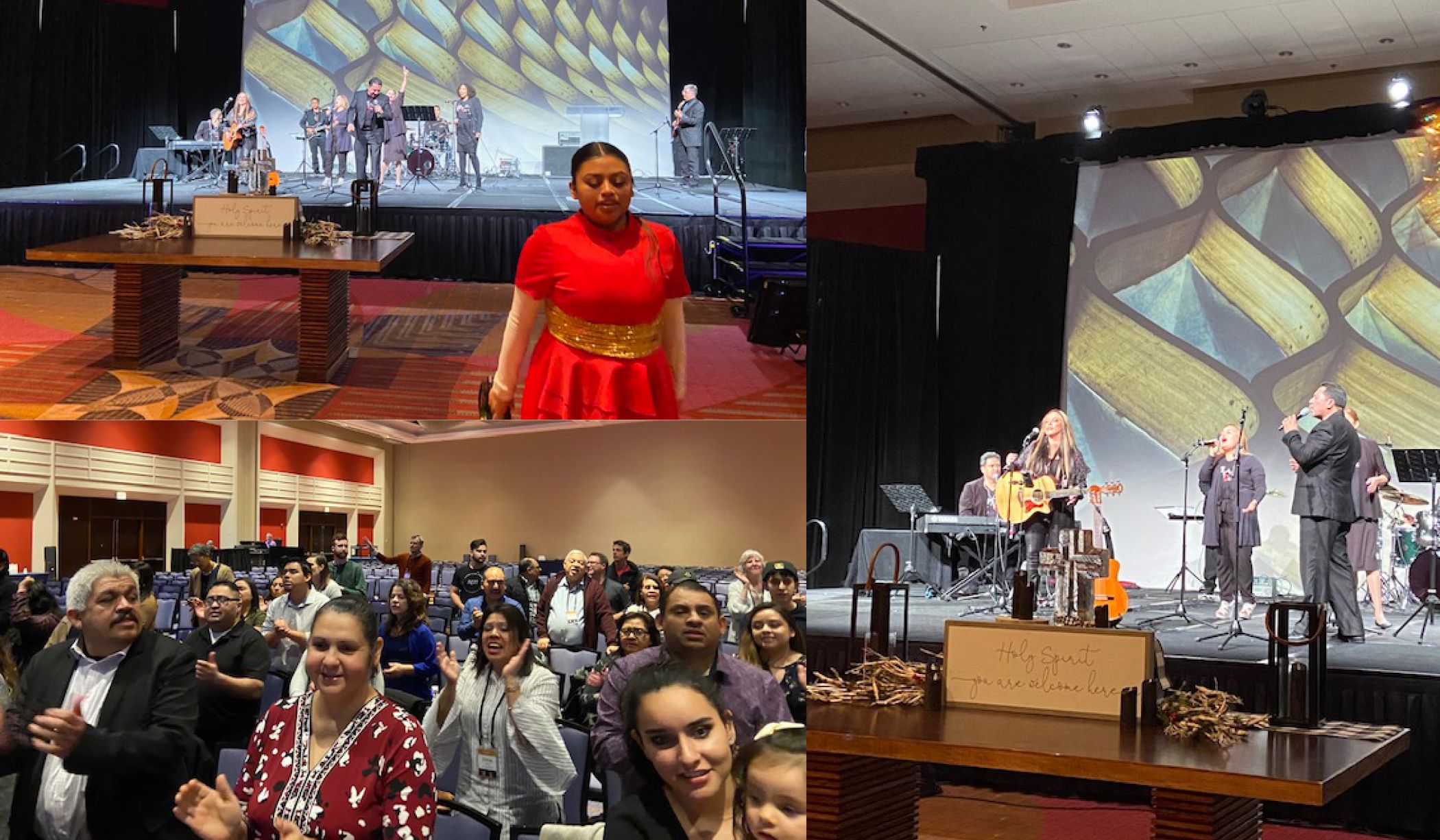
What can you teach us about what it is like to be a part your community?
The Latino community is very family oriented. Community is central. The ECC is an extension of our community, our family.
But we do feel unseen at times. All too often, since Latinos frequently exist on the margins and in the shadows, we get overlooked when racial issues are accessed. It would be tragic and irresponsible to repeat this mistake. So, looking forward we need to make sure that we are listening to the voices of the whole mosaic. For the Latino community, we must remain vigilant to address other issues such as immigration, poverty and police brutality.
Also, a word regarding language. The term “Hispanic” was a term handed to us. It has been used to describe Spanish-speaking countries. This term also carries a sense of dominance or the heaviness of the Doctrine of Discovery. It is a limiting, unhelpful term.
We would prefer to use the term “Latino.” This includes non-Spanish speaking cultures which are closely related, such as Brazil or Portuguese. Latino is a more inclusive word, hence, the reasoning behind the name change.
What are the needs of your community?
The biggest issue we face is immigration. It is very uncomfortable for some to discuss. We can say we love Jesus but then we pick and choose what to care about. But fear is alive and well in those I serve. I long for us to ask the question: How can we love our undocumented pastors, people and neighbors?
Within the system there are issues of justice and we need to rise up. We are trying to have a voice at the table within the denomination so that we can help make changes within the ECC and within our country.
Within the MOSAIC (ECC ethnic associations) we are trying to work together for change. The fact that the four associations exist (ALIPE, IMA, CAPA and AAMA) is a picture of how the Church can work for change. We are so different and come from so many different places, yet we are trying to empower one another and influence our denomination to be more reflective of the Kingdom.
One of the reasons my community has unique challenges is that many of us do not speak English. There is a language barrier on both sides.
But we are resilient and hard workers. We are valuable and worth a listen. It grieves me that they aren’t always given a chance to speak and are often overlooked.
What can you tell us about ALIPE?
It is the association for Latino pastors and lay leaders of the ECC. We are actually working on a publication about our history. But from what I know, the first Latino church was established in the early 1970s and the association that was then known as MHIPE (Ministerios Hispanos de la Iglesia del Pacto Evengelico) began sometime in the late ’70s or early ’80s. Currently we have about 80 Latino churches across the U.S., including church plants.
As the president of ALIPE, I also represent us at an international level with the participation in CIPE (Confraternidad de Iglesias del Pacto Evangélico), the network of Covenant churches across Latin America.
What would your encouragement for us be in these days filled with conflict, pain and challenges regarding justice?
The Dead Sea is rich in minerals and people can lie down in it because it is so full. However, it is dead. There is no life there.
We can learn and learn, get so full we can lie down in our knowledge. But we can remain dead. Instead, listen and learn. But live it.
The Six-Fold Test can help us to live it. As we have power, let us share and give it away. Share space. Share stories. Share power. Be accountable. Let’s help our churches remain accountable to one another, to the denomination. And I believe using the Six-Fold Test can help us to do this. Learn it. Live it.
What resources would you recommend for those who want to learn more?
- “Brown Church: Five Centuries of Latina/o Social Justice, Theology, and Identity” by Robert Chao Romero
- “Santa Biblia: The Bible Through Hispanic Eyes” by Justo L. Gonzalez
- “The Color of Compromise: The Truth about the American Church’s Complicity in Racism” by Jemar Tisby
- ECC Immigration Immersion Experience: tour into L.A. and Tijuana (transformational even for those of us who understand what happens and are living it everyday)
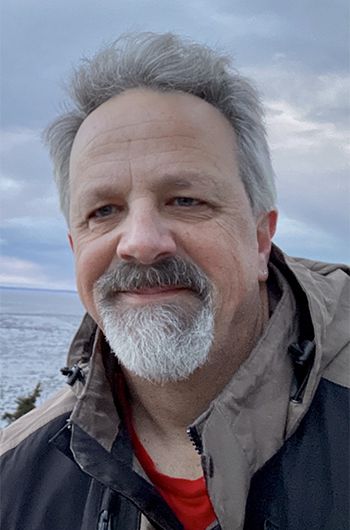 The Rev. TJ Smith is President of the Indigenous Ministers Association (IMA) and Pastor of New Song Covenant in Anchorage, AK. In a recent interview, he shared insights on the challenges and opportunities facing Indigenous people.
The Rev. TJ Smith is President of the Indigenous Ministers Association (IMA) and Pastor of New Song Covenant in Anchorage, AK. In a recent interview, he shared insights on the challenges and opportunities facing Indigenous people.
What is your life like in Anchorage?
As we live here, we see Creator (God) in all we see. As I fish, I give thanks to the Creator that allows us to catch it, share it with our family and eat it. Currently the salmon are starting to run, and I am fishing for my family and elders.
I am also currently re-learning my Lakota language. I am at least the fourth generation away from the last Lakota speaker in my family. As I learn it, I find myself at peace with it. I was created as a Lakota. As I learn my language it helps me become more of who I was created to be, who I am.
My goal is to learn one to two words each week and use them in my prayer and everyday life. Even my dogs are learning it as I speak to them. An example is I tell our dogs hiya and wasté all the time (no and good).
What can you help us understand about indigenous people?
We, Indigenous people, are a people that are often unseen, invisible to most people. Often, we are left out of the conversations about racism or injustice that has or is being done to people of color.
In American history, and the founding documents of the United States, blacks were considered 3/5 human and Native Americans were considered “merciless savages.”
There are over 570 nations in the USA and Canada. Historically, Canadian experiences are different because of British influence. The Canadian Federal Government has given a public apology to the Metis, First Nation and Inuit people. Here in the United States, Doctrine of Discovery was practiced in the early days of Europeans coming to these lands. In 1492, the Pope gave Portugal the Doctrine of Discovery—and other nations accepted it and used it in claiming lands that we already occupied by Indigenous people around the world. It was used as people “used” the Bible to justify their colonizing lands as a way of finding a new Promised Land, bringing salvation to heathens and having God’s blessings in it all.
In the times of the “explorers” they allowed anyone to claim any lands as they saw fit for the flag of the country they were under. If they got to the mouth of a river and planted their nations flag, that river and all tributaries and the land where then that country. It continues to impact policy and our world today.
We can see current examples in pipelines at Standing Rock, water rights in California where a nation lost the federal recognition in 1982 as the Shasta dam wiped out their land and sacred land in 1941. We can see it in Hawaii with the desire to build a 15th telescope on sacred ground at Mauna Kea. Even as recent as the Governor of North Dakota telling the nine reservations to open their borders to let the traffic flow free although they had closed the borders of the reservation to protect the people from COVID-19.
We are thankful that the Evangelical Covenant Church is formally working to have the repudiation of the Doctrine of Discovery in Gather 2021. Philimayé (thank you) to Paul Robinson of LMDJ and Lenore Three Stars for your unending work in getting this repudiation done.
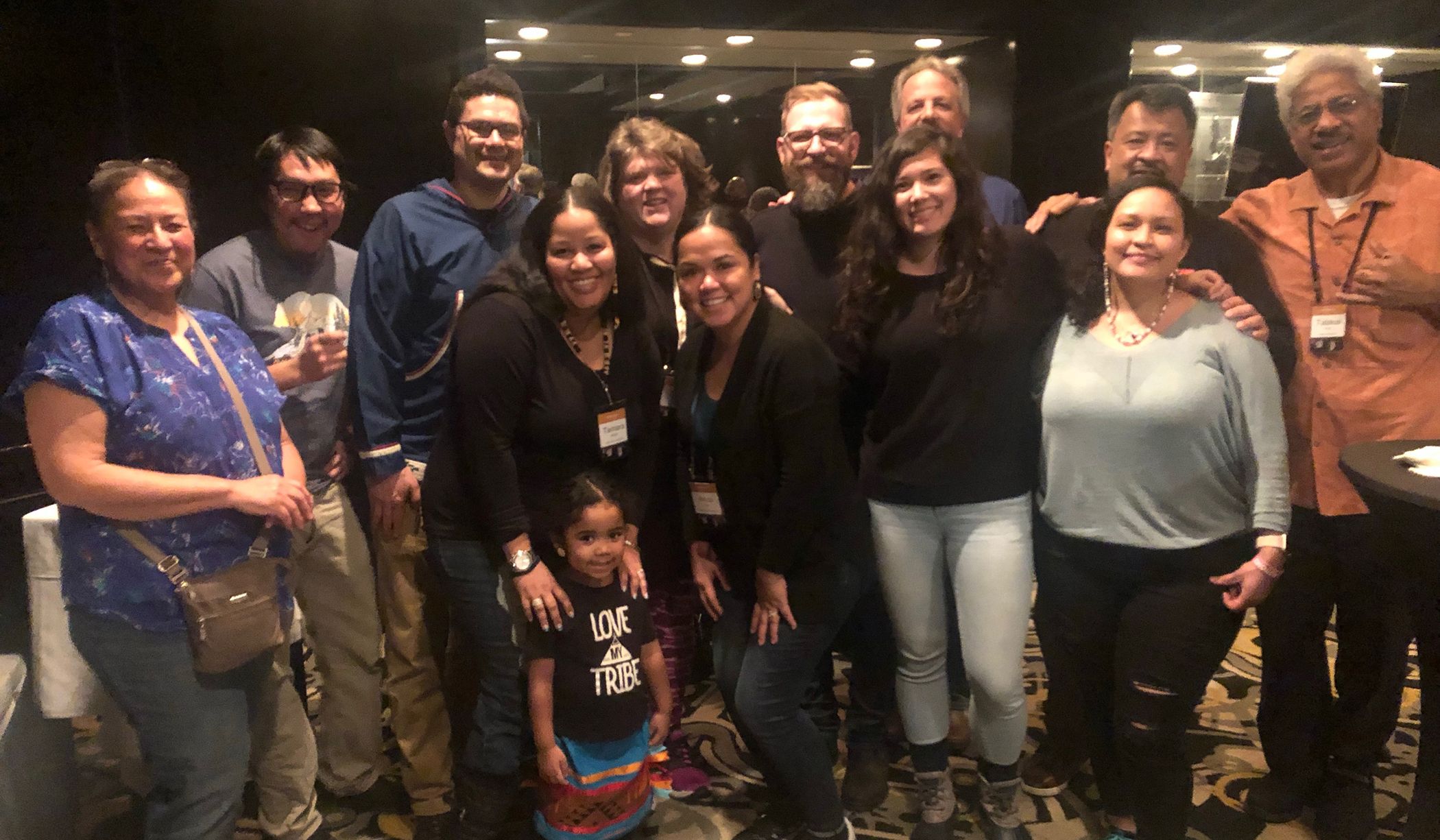
What are the needs of your community?
Many times people see a movie or read a book and think, “I know the people and the cultures.” Or because they understand one Indigenous people they think they understand all Indigenous people.
Of the 570 Nations in Canada and the United States, each Nation is independent, each has their own language, culture, traditions, foods, regalia, etc. Do not try to be an expert after reading one book or watching one movie. Keep learning. If you go and serve on a reservation, go asking, not assuming you know what they need.
Revelation 7:9 (CEV) is my heartbeat: “After this, I saw a large crowd with more people than could be counted. They were from every race, tribe, nation and language, and they stood before the throne and before the Lamb.”
I long to see all nations, all tribes, all tongues worshiping Jesus each as we are created to be. Worship, as you are created to worship. And welcome others to do the same. For myself, as an Indigenous person I do not separate who I am, my culture from my faith. It is an Indigenous mindset. Everything we do is sacred, our life and relationship with Wakan Tanka, Creator, is integrated. All part of who we are.
See us. We are an invisible people. We may not be loud, but we are striving for equality and peace. Much has been taken from us, before Columbus landed on North America it was 100 percent Indigenous land, now we are less than 4 percent Indigenous land being put on a reserve or reservation with 20 percent of that being “owned by non-Indigenous people.”
Walk a mile in our shoes. When everything has been taken away from you, language, culture, traditions, traditional food that we can no longer gather or hunt … Do not judge us but listen to our stories. It will take us time with you as every treaty that was signed in Canada and by the United States government has been broken, so we rightfully do not trust those in authority or those outside our people and community.
What can you tell us about the IMA?
There has been an indigenous voice at the table of the Ethnic Association of the ECC since 2004. Now we officially have a vote at the table, along with the original Association AAMA, then CAPA and ALIPE. IMA was officially recognized by the Executive Ministers of the ECC in March of 2020.
We currently have 14 nations as part of IMA. We gather to learn to drum together, be in community as Indigenous people together. At Midwinter 2020, we had our first association dinner to gather together. It was encouraging to have Indigenous people come together. Though we are each unique, we have some common traditions; to share our stories, to hear our elders share their wisdom and to affirm our cultures.
We have often been told by some of our families, by the culture of the United States and Canada, to be ashamed of being who we are created to be. At IMA we are striving to be who we are created to be through the use of sharing our languages, cultures and traditions—all while we serve the Creator together in the ECC.
What resources would you recommend for those who want to learn more?
Listen to Supaman: He is from the Crow Nation and does hip-hop and rap. He is a follower of Christ and shares his culture through dancing in full regalia as he shares his humor, Scripture and injustices in his songs.
Listen to One World: We Are One, a group of singers and rappers, all indigenous artists.
Listen to Broken Walls, it is a Mohawk worship group. They do some songs in their language and use the drum for worshipping the Creator.
Some books to read include:
- “Crazy Horse and Custer” by Stephen Ambrose. A historical novel that compares the mindset of Crazy Horse and Custer and the cultural differences.
- “Unsettling Truths” by Mark Charles and Soong-Chan Rah. A great book about the Doctrine of Discovery and the damage it has and continues to do to People of Color.
- “Neither Wolf nor Dog” by Kent Nerburn (also made into a movie). It gives great insight to how an Indigenous elder see the world.
- “One God Many Tribes” and “Rescuing the Gospel from the Cowboys” by Richard Twiss, an Indigenous Theologian.
- “Jesus and the Eskimo” by Fred Savok.
In film:
“Indian Horse” where a Canadian First Nations boy survives in a residential school in the 1970s and the impact of it on his life.
Some online resources to check out include:
- Murdered and Missing Indigenous Women
- The Fullness Thereof: How Indigenous worldviews offer hope to a besieged planet
- ECC history in Alaska: http://www.alaskool.org/native_ed/research_reports/by_one_spirit/byonespirit.htm
- ECC Covenant Companion “The Alaska Story: https://covenantcompanion.com/2012/05/01/the-alaska-story/
- ECC Alaska Conference: https://www.alaskacovenant.org
Check your March/April Covenant Companion for recent stories of Indigenous Ministers
Also please contact TJ Smith for further conversation and to learn from his stories.
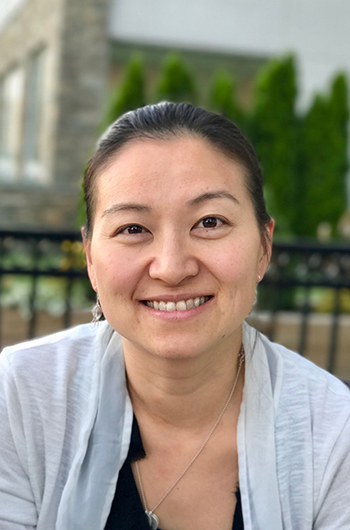 Recently, we spoke with Rev. Mary Chung March, President of the Covenant Asian Pastors Association (CAPA) and President of the Mosaic (Ethnic) Commission, to share insights on the Asian North American experience. March serves as co-lead pastor of New City Covenant Church in Edina, MN. She is married to John (co-pastor at NCCC) and is a mom of four.
Recently, we spoke with Rev. Mary Chung March, President of the Covenant Asian Pastors Association (CAPA) and President of the Mosaic (Ethnic) Commission, to share insights on the Asian North American experience. March serves as co-lead pastor of New City Covenant Church in Edina, MN. She is married to John (co-pastor at NCCC) and is a mom of four.
As we celebrate Asian American Heritage Month, what in particular are you grateful for or celebrating?
I am grateful to my parents, my family, my Korean heritage and my Korean immigrant church in Jersey City, NJ. I am grateful for the legacy of prayer and ministry of the Korean immigrant church.
I celebrate our CAPA clergy and lay leaders who have navigated cultural, achievement, and systemic barriers to serve and love their churches sacrificially—especially in our current COVID-19 realities. I’m grateful for our denominational family of churches who is leaning into practicing solidarity with one another in our multiethnic mosaic.
Can you help us to better understand the history and experience of our Asian brothers and sisters?
The term “Asian American” or “Asian North American” (including our Canadian ECC Asian brothers and sisters) refers to more than 24 Asian ethnicities, each with distinct culture, history and lived experience.
CAPA has 135 credentialed clergy. Of that 135, we have 53 lead pastors, 18 missionaries, 12 chaplains, three full-time professors (North Park Theological Seminary, Trinity Evangelical Divinity School, Seattle Pacific University) and several adjunct professors, five senior administrators and directors, and two regional coordinators.
In terms of the diversity and heritages within CAPA, there is diversity in the term Asian North American. Chinese, Indian, Japanese and Korean may be among the first of such ethnic groups that come to mind, but “Asian American” and “Asian-North American” is also reflective of Hmong, Bhutanese, Mongolian, Cambodian, Laotian, Nepalese, to name just a few.
When we use the term “Asian North American,” we include more than 24 ethnicities. Despite how many distinct ethnicities, they can share the common experience of being seen as the “model minority” or “perpetual foreigner.”
Also worth mentioning is that fact that 75 percent of Asians in the U.S. are immigrants or children of immigrants (18 and under). In terms of Asian Americans, is it helpful to note that they have widely diverse and divergent experiences across generational and class lines. They are not all equal in their levels of education and social access.
Subjected to certain social myths, the most pervasive of which are the myths of the “model minority” and the “perpetual foreigner,” Asian Americans are not permitted to fit in, no matter how many generations they have been in the U.S. These myths are harmful to the Asian American identity and in relating to Asian Americans.
“When such umbrella terms are used to describe the varied experience of 20 million people hailing from diverse contexts and backgrounds, we unintentionally conflate (and flatten) the lived experience of people of Asian descent residing within the U.S.” (from the Midwinter 2019 CAPA workshop put on by Dominique Gilliard, Director of Racial Righteousness and Reconciliation for the Love Mercy Do Justice mission priority of the Evangelical Covenant Church, and Mark Tao, former CAPA Board Member and Pastor).
CAPA’s hope, and my own, is to broaden the conversation concerning the Asian North American experience and to bring greater awareness of the primary issues facing the Asian North American population in the U.S., Canada and in the Evangelical Covenant Church as a whole.
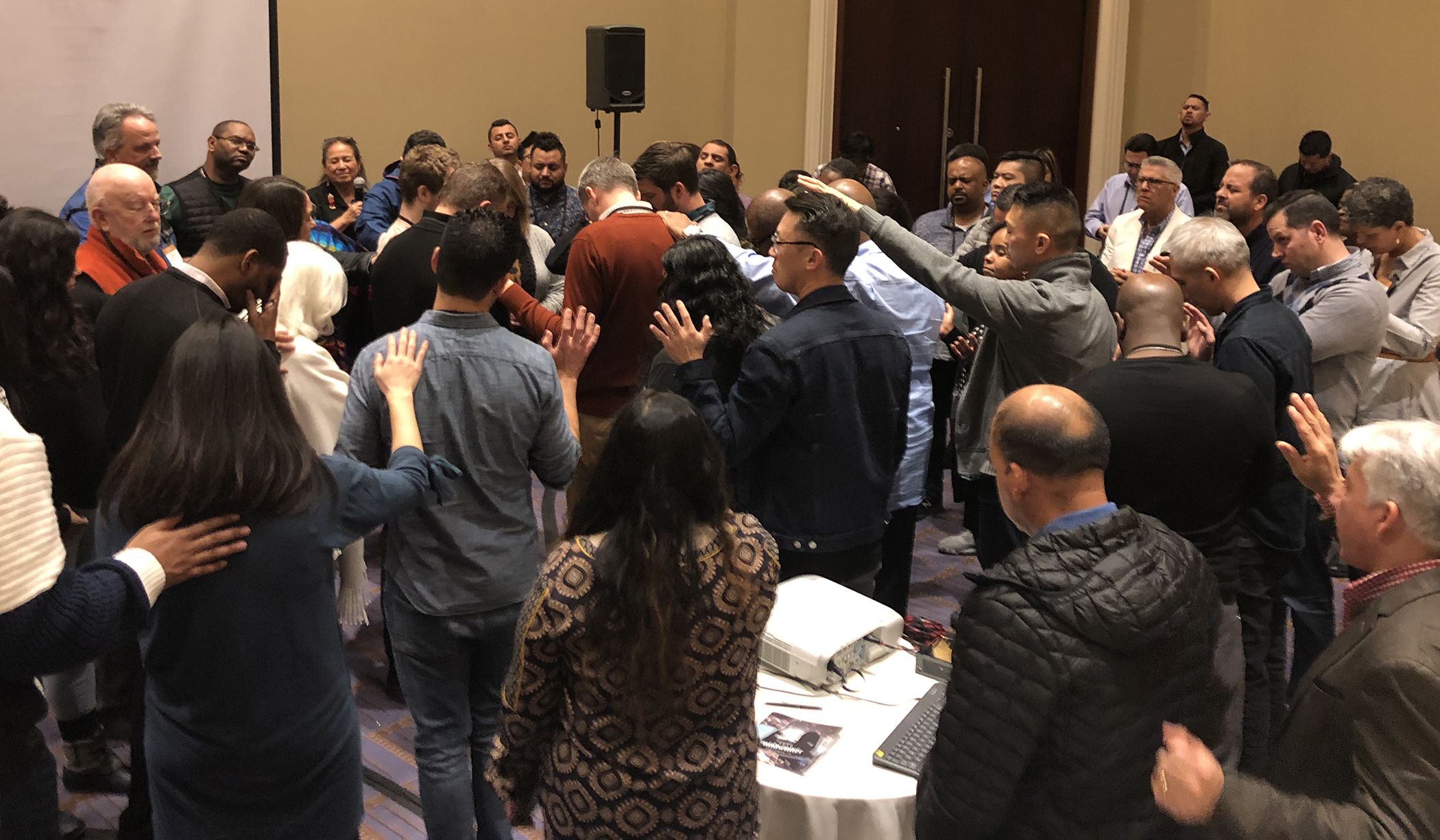
What do you see as some of the most important needs for our Asian pastors or churches within the ECC? What can we be praying for?
Right now, we need solidarity and people speaking up when they see xenophobia or acts targeted against Asian North Americans.
Russell Jeung, a professor of Asian American Studies at San Francisco State University, started tracking these attacks on a new website he helped launch called Stop AAPI Hate. In the site’s first eight days, it received more than 650 reports of discrimination—largely against the Asian American community. In four weeks, 1,500 reports filed in. And these are only the ones being reported.
Here in the Twin Cities, Asians have received hate letters taped to their door, an elderly Asian woman was even kicked in the face.
Pray for Asian and Asian American communities impacted by xenophobia, racial/ethnic profiling, scapegoating, hate crimes and business boycotts. We need your prayers. I know you’ve all heard stories. They are real. People are being attacked like the two-year old and six-year old children who were stabbed at the Midland, TX Sam’s Club.
There was a recent story in Woodbury, MN, of someone posting a racist note on an Asian couple’s door. The note said “We are watching you. … We don’t want you hear (sic) infecting us with your disease.”
There are so many more not being recorded. Romans 12:9-10 calls us to authentic love. To hate evil and cling fast to the good. One way we can do that is to pray and speak up if you see something.
What is the mission of CAPA and when do you meet?
The mission of the Covenant Asian Pastors Association is to support and encourage Asian North American credentialed clergy, seminary students and any clergy and ministry leader of Asian descent serving in an Asian context.
It also strategically partners and assists the wider Evangelical Covenant Church as a denomination and its regional conferences on issues that affect Asian ministers, their congregations, and the greater multi-ethnic mosaic.
We hold our annual CAPA business meeting and dinner on Wednesday of Midwinter followed by our CAPA After Party. CAPA also hosts a Pre-Gather Retreat where we take time to encourage, mentor and minister to CAPA members.
Recommended Reading and Next Steps
- In Brando Simeo Starkey’s “Why We Must Talk about the Asian-American Story, Too,” Michael Luo’s New York Times article is discussed and highlights some hurtful realities experienced by Asians in the U.S.
- For the full story in Woodbury, MN, click here.
- ‘I don’t have the virus’: Asian Americans in Minnesota confront a COVID-19 backlash
- Sign the Asian American Christian Collaborative COVID-19 Statement
- Read the Asian American Christian Collaborative Action Steps
CAPA 2020 Board
Rev. Mary Chung March (President)
Rev. Stephanie Ahn Mathis (Vice-President)
Rev. Manoj Mathai (Vice-President)
Rev. Brian Hui (Treasurer)
Rev. Ancy Post (Secretary)
CAPA Website: https://www.ecccapa.org
CAPA email: ecccapa@gmail.com
Find CAPA on Facebook at: facebook.com/groups/ecccapa
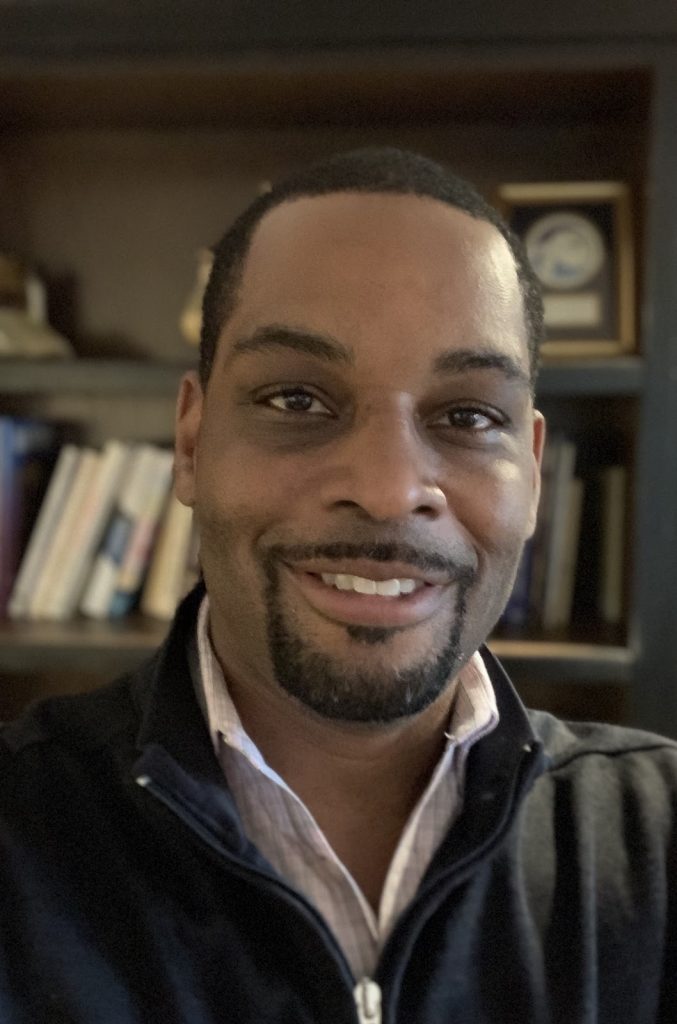 Recently, we had the privilege of interviewing the Rev. Bryan Murphy, President of the AAMA (African American Ministers Association). Bryan is a friend and an important and wise voice at the ECC Mosaic Commission Table.
Recently, we had the privilege of interviewing the Rev. Bryan Murphy, President of the AAMA (African American Ministers Association). Bryan is a friend and an important and wise voice at the ECC Mosaic Commission Table.
Bryan, will you tell us a little bit about yourself?
I grew up in Indiana and went to school at Purdue before I moved to California in the early ’90s to work in Silicon Valley. After a few years in California, I started to sense a call to ministry and went into full time ministry in 2007. I have been the Lead Pastor at my church, Southbay Community Church in Fremont, CA, since 2011.
I have been married to my wife for 20 years. We have three children and three grandchildren who are the joys of our lives.
As we celebrate Black History Month, what in particular are you grateful for or celebrating?
During Black History Month, I am grateful for the growing broader understanding of the contributions of African Americans in our country. I feel like the conversation is broader than just Martin Luther King Jr. and the contributions of this one man.
To really understand the broad and rich heritage we have, we look to black writers, philosophers and inventors. Understanding the breadth and depth of contributions enlightens and encourages people to appreciate the richness of a heritage that they can be proud of.
For many segments of black America, the culturally normative reality is that we have been and continue to be second-class citizens and are considered “less than.” The celebration of Black History Month each February gives us an opportunity to celebrate. Black History Month is not just for ourselves but for the entire nation to celebrate with us the rich heritage and contributions of our culture.
Related to that is my growing excitement that the conversation is becoming broader than just one that is held in a particular segment of American culture. I saw a post on Facebook the other day that was encouraging because majority culture people are using this month as an opportunity to tear down some of the historic divisions and stereotypes and educate themselves and their children.
And so, the thought of this month not just being for a segment of our culture, but for the entire culture to celebrate the mosaic and our diversity, is exciting to see. There is a perspectival shift starting to happen.
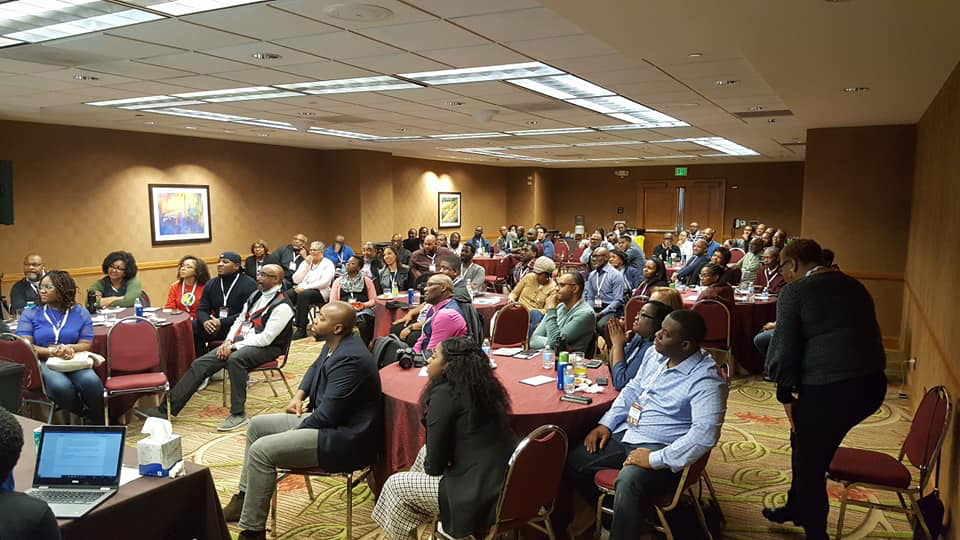
It is deeply encouraging to see the whole mosaic celebrating and engaging Black History Month in different ways. Can you tell us a little bit about AAMA, its mission, when it meets and who serves on the Executive Board?
The purpose of the AAMA is to 1) support African American credentialed clergy and African American seminary students who desire to transition to ministries requiring clergy credentials and 2) serve as a partner with the ECC and its regional conferences on issues affecting African American ministers and the ministries they lead in pursuing the goals of the Covenant and its vision to impact the world for Christ.
We have three major gatherings every year. Peer Mentoring is an event that we host in October. It is a great opportunity for fellowship and mutual encouragement. We also gather at Midwinter and at Gather each year.
Our AAMA Executive Board consists of me as President, Brandi Sanders as the First Vice-President, Michael Thomas as the second Vice-President, Nilwona Nowlin as Secretary and LaNiece Thomas Flagg as Treasurer.
As president of AAMA, what do you see as the most important needs for our AAMA pastors and churches within the ECC? What can we be praying for?
Many of our AAMA churches are serving under-resourced communities and one thing that would be beneficial is to have sister Covenant churches (particularly those who have resources, facilities, or things that could be a benefit) partner with AAMA churches. I think it’s very much an Acts 2 model. That is a tangible thing that could help establish stronger ministry connections across the Mosaic and heighten the ability to reach more people.
Outside of that, I think a continued validation of the effectiveness of ministries outside of the suburban context, and affirmation that there is a validity and a recognition that God is moving in our communities and people are coming to Christ. People in our communities are being healed and transformed in contexts where thriving can be difficult. It would be mutually beneficial to celebrate these stories, and to have those stories be a part of our joint purposeful narrative at local, conference, and denominational gatherings—informing and shaping our theology, voice, space and story as we see and appreciate how God is moving within our multiethnic mosaic of churches.
I think this is more of a touch point than a need. I think we can also be praying for marriages, families and God’s provision. And as you would pray for your pastors and peers, pray for our churches and pastors and the weight and burden of ministry and leadership our pastors carry in the contexts they are serving. Pray that we still find balance and rest and that we are living faithfully to the call but not burning out in the process. Many of our pastors are solo pastors and so they carry almost the entire weight of their ministry on their own. This references back to the partnership thing.
What are some resources you would recommend that would give us greater understanding of the history and needs of our AAMA community?
Resources:
- I would recommend watching this short YouTube video, “Systemic Racism Explained” and write down some thoughts, questions, or prayers that arise after watching it.
- Consider signing up for one of the ECC immersion experiences like Sankofa (Oct. 15-18, 2020 or Journey to Mosaic, Immigration Immersion Experience, etc.) or if you are hoping for something more local, ask your conference office to consider hosting one in your area. https://covchurch.org/justice/racial-righteousness/sankofa/
- Consider engaging a resource on Dominique Gilliard’s blog on “Black History Month Recommendations” https://dominiquegilliard.com/blog/
Great resources. Thank you for that. Lastly, for those who aren’t familiar with AAMA, what would be a good way to learn more about the association or get involved?
You can get involved by coming to one of our three annual meetings at Midwinter, Gather and Peer Mentoring. Our website is https://www.aama-ecc.org/. Or feel free to contact us at info@aama-ecc.org.